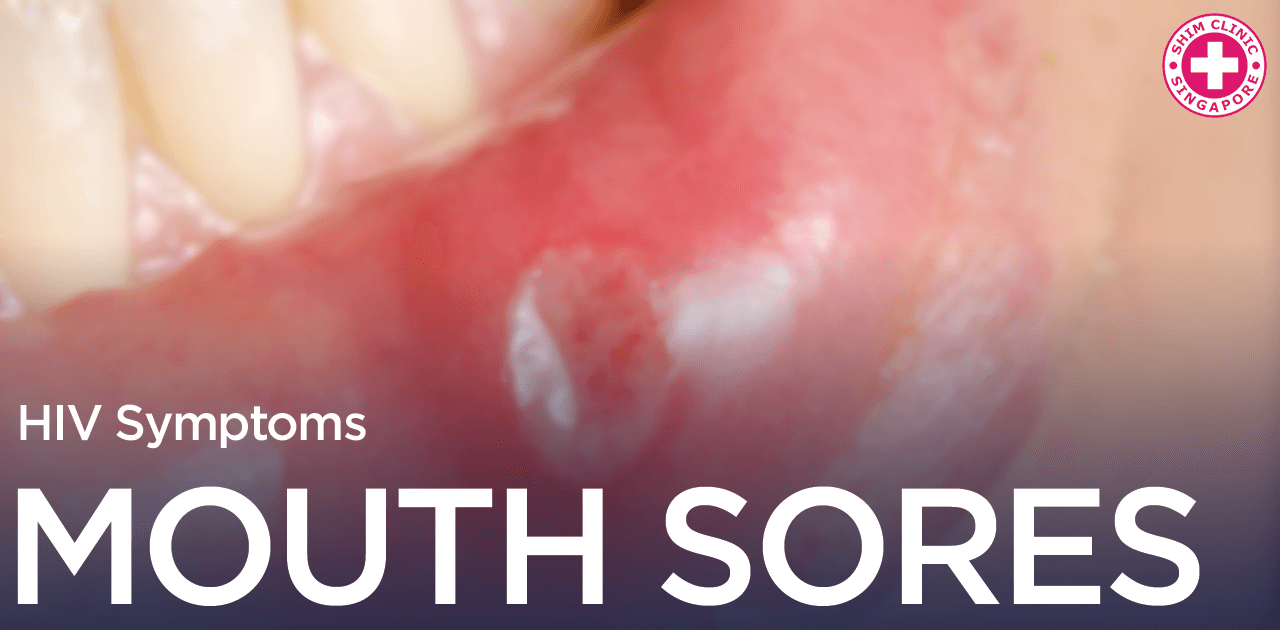HIV Mouth Sores Singapore | Shim Clinic
| Help me about HIV Mouth Sores ! |

| Permalink: https://shimclinic.sg/hiv-mouth-sores |
Mouth sores, along with sores in the esophagus and on the genitals or anus, are common manifestations of the early phase of HIV infection. If you have these and other HIV symptoms, you should get an HIV test. The test can miss a very early HIV infection, so you may also need a follow-up test.
Mouth sores are one of the common manifestations of acute HIV infection. This is the phase of the infection that begins 2 to 4 weeks after exposure. Although some people don’t have any symptoms during this time, others do have a variety of different symptoms. In addition to sores in the mouth, there may also be sores on the genitals or the anus. People with acute HIV infection may also have sores in the esophagus, which is the tube that carries food from the mouth to the stomach. Although these aren’t easily seen, they may cause pain or discomfort when swallowing.
Oral sores can also be a result of other causes. Many people mistakenly believe that their mouth ulcers are “cold sores,” which are the result of a common infection with a virus that can recur many times throughout life. Others may believe that their oral ulcers occurred because they accidentally bit their cheek, lip, or tongue, or that a piece of sharp or hot food caused the mouth sores.
- Mouth sores, along with sores in the esophagus and on the genitals or anus, are common manifestations of the early phase of HIV infection.
- There are other common causes of mouth sores, including “cold sores,” which are caused by a virus.
- Although sores are a characteristic feature of acute HIV infection, it’s not possible to establish the diagnosis based on these symptoms alone. An HIV test is needed.
- HIV tests can miss a very early HIV infection, so if the test is negative but HIV is still suspected, you may be asked to return for another HIV test in a few weeks.
Although sores on the mouth, genitals, and anus are a characteristic feature of acute HIV infection, it’s still not possible to diagnose HIV infection based on HIV symptoms alone. You will need an HIV test to be sure that it’s actually HIV that’s causing the symptoms. You can get an HIV test at an STD clinic. Make sure to tell your provider about any possible exposures to HIV (for instance, having unprotected sex, or having a condom break during sex) and when they occurred.
Some types of HIV tests return results earlier than others, so your provider will need to choose the test that’s most likely to be able to catch an infection if you do have HIV. If it’s negative, but HIV is strongly suspected based on your HIV symptoms and possible exposure to the virus, then you may be asked to return for another HIV test in a few weeks. An HIV test can miss a very early HIV infection, so it’s possible that you do have HIV but the test just isn’t able to detect it yet.
Sources:
Mayo Clinic. “STD symptoms: Common STDs and their symptoms.” Mayo Clinic. Published 18 Mar 2015. Accessed 20 Jul 2016. http://www.mayoclinic.org/std-symptoms/art-20047081
Centers for Disease Control and Prevention. “Screening Recommendations Referenced in Treatment Guidelines and Original Recommendation Sources.” Centers for Disease Control and Prevention. Published 04 Jun 2015. Accessed 20 Jul 2016. http://www.cdc.gov/std/tg2015/screening-recommendations.htm
Centers for Disease Control and Prevention. “HIV/AIDS.” Centers for Disease Control and Prevention. Published 05 Jul 2016. Accessed 27 Jul 2016. http://www.cdc.gov/hiv/
Centers for Disease Control and Prevention. “HIV Basics – Testing.” Centers for Disease Control and Prevention. Published 12 Jul 2016. Accessed 20 Jul 2016. http://www.cdc.gov/hiv/basics/testing.html
U.S. Department of Health & Human Services. “Post-Exposure Prophylaxis (PEP).” AIDS.gov. Published 21 Sep 2015. Accessed 20 Jul 2016. https://www.aids.gov/hiv-aids-basics/prevention/reduce-your-risk/post-exposure-prophylaxis/
| Timeline | HIV | STD | Pregnancy |
|---|---|---|---|
| Before exposure | |||
| Contraception (females only) | |||
| HIV PrEP (pre-exposure prophylaxis) - Stop HIV infection before exposure | STD vaccine: - Hepatitis vaccine - HPV vaccine | ||
| STD / HIV exposure | |||
| 0-72 hours | HIV PEP (post-exposure prophylaxis) - Stop HIV infection after exposure | STD testing * - Screening test - to look for asymptomatic infections - from previous exposures | Emergency contraception with the morning-after pill (females only) |
| 2 weeks | HIV DNA Test | ||
| 1 month | HIV 4th Generation Test - SD Bioline HIV Ag/Ab Combo - Fingerprick blood sampling. - 20 minutes to results | ||
| 3 months | HIV 3rd Generation Test - OraQuick® HIV-1/2 Antibody - Oral fluid or - Fingerprick blood sampling. - 20 minutes to results | STD testing * - Full & comprehensive - diagnostic test - to look for current infections | |
| Watch for | HIV Symptoms | STD Symptoms | |
| If infected | HIV Treatment | STD Treatment | Abortion |
References